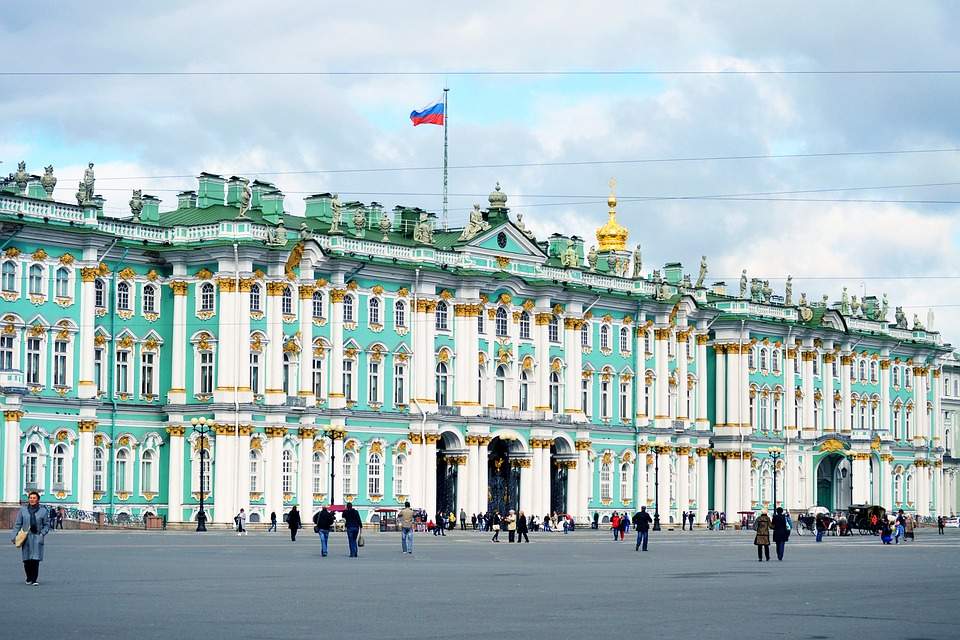Will Russia continue to lend its works for exhibitions abroad? Maybe not for a while
The last works from theHermitage in St. Petersburg that were in Europe on loan for exhibitions have returned to Russia. They are two paintings that were in Milan for the exhibition Titian and the Image of Woman in Sixteenth-Century Venice(here is our review) held in Milan’s Palazzo Reale and ended last June 5: Titian Vecellio ’s Young Woman with Plumed Hat (1534-1536) and Giovanni Cariani’s Young Woman with Old Man in Profile (1516-1518), which returned to the Hermitage last June 21. These are not the last Russian works that are still to be found around Europe: in Italy, for example, it is still possible to admire Vasily Kandinsky’ s paintings at the Palazzo Roverella exhibition in Rovigo.
“These masterpieces,” said the Russian Minister of Culture, Olga Lyubimova, referring to the Hermitage paintings, “were the only objects from the funds of Russian state museums presented in this exhibition. And also the last Hermitage objects that until then were on the territory of European states.” In recent days Pablo Picasso ’s Young Woman, on display until May 15 in Rome at the Alda Fendi-Experiments Foundation, had also returned to Russia. These works had experienced some complicated days in March, when the museums where the works were on loan reported that they had received some letters from Russia requesting their return. However, a few days later, thanks to diplomatic action spearheaded by the Hermitage Italy foundation, arrangements had been made for the works to remain in Italy. Now, however, it is fair to wonder what will happen in the short term, or at least until there is a return to a relaxed climate between Russia and Western Europe: will Italy, and in general the states of the European Union, continue to cooperate with Russia to organize exhibitions with reciprocal loans?
It may be too early to tell, but some rather eloquent signals and statements have already come from Russia. The first to outline the future of Russia’s international cultural operations was, on April 11, former Russian president and current deputy chairman of the Security Council of the Russian Federation, Dmitry Medvedev, who spoke in the aftermath of the April 7 mishap in Finland, when the customs in Helsinki had detained a shipment of works that were returning from exhibitions in Italy and Japan, only to return them shortly thereafter, having ascertained that the state-owned works of art were not and are not on the list of Russian goods for which transit through Europe is prohibited due to sanctions. To clarify the situation, the European Union had included, in the document concerning sanctions (Regulation 833/2014 “concerning restrictive measures in view of Russia’s actions destabilizing the situation in Ukraine”), a special amendment to exclude cultural goods (“the competent authorities,” the text reads, “may authorize the transfer or export to Russia of cultural goods on loan in the context of official cultural cooperation with Russia”).
In connection with the mishap that occurred with Finland, Medvedev had written on his Telegram channel that “the EU bureaucracy brazenly forced Finland, under far-fetched pretexts, the ’sanctions,’ to withhold paintings from the Hermitage, the Tret’jakov Gallery, and the Pushkin Museum, which were exhibited in Italy and Japan, at the border. Only with colossal efforts was it possible to convince the local Foreign Ministry to back down: permission for their transportation was issued.” The Security Council vice-president added that Moscow has a “rich agenda” with other countries, such as those in the BRICS group (which includes, in addition to Russia, Brazil, India, China and South Africa), those in Latin America and Africa. There are also, Medvedev declared, “ultra-modern contemporary art museums” in the Middle East and Southeast Asia that could be involved. Moreover, the idea that for Russia the BRICS countries could be an alternative to the West has been revived in recent hours by Russian President Vladimir Putin himself.
No news has come from Russian museums about possible collaborations with Italian or European institutes: on May 20, Olga Babina, director of the Russian State Museum in St. Petersburg, let it be known that the institute “has no plans yet for new exhibitions abroad and in the near future will focus mainly on exhibition activities in Russia.” Another significant statement came on May 24 from Mikhail Shvydkoy, Special Representative of the President of the Russian Federation for International Cultural Cooperation. Shvydkoy said that “the lending of works for exhibitions abroad should be suspended until the end of 2022,” but that exceptions could be made for members of the CIS (Commonwealth of Independent States, an international organization that brings together nine of the fifteen former Soviet republics: in addition to Russia, its members include Armenia, Azerbaijan, Belarus, Kazakhstan, Kyrgyzstan, Moldova, Tajikistan, Turkmenistan and Uzbekistan). “I think foreign loans should be postponed until the end of the year,” Shvydkoy said. “Let the works ’rest’ in Russian museums.”
Pictured is the Winter Palace in St. Petersburg, part of the Hermitage complex.
 |
| Will Russia continue to lend its works for exhibitions abroad? Maybe not for a while |
Warning: the translation into English of the original Italian article was created using automatic tools. We undertake to review all articles, but we do not guarantee the total absence of inaccuracies in the translation due to the program. You can find the original by clicking on the ITA button. If you find any mistake,please contact us.




























